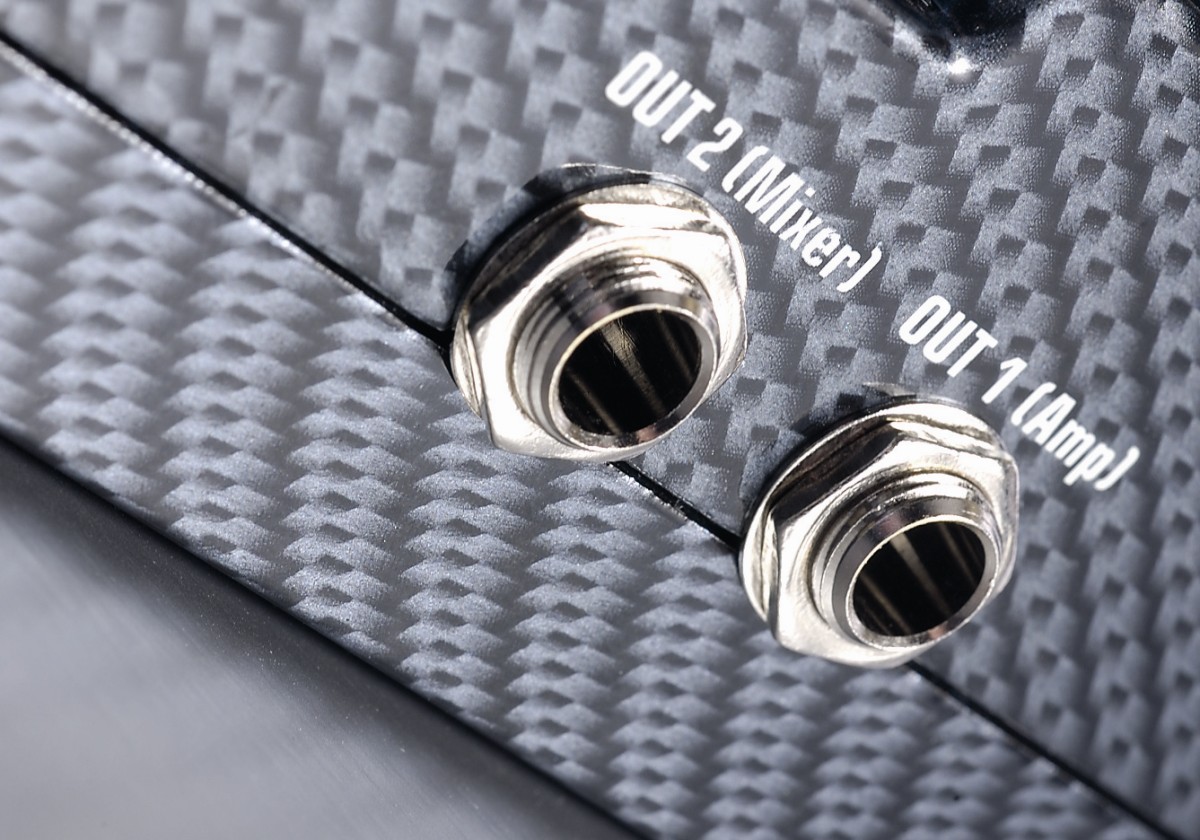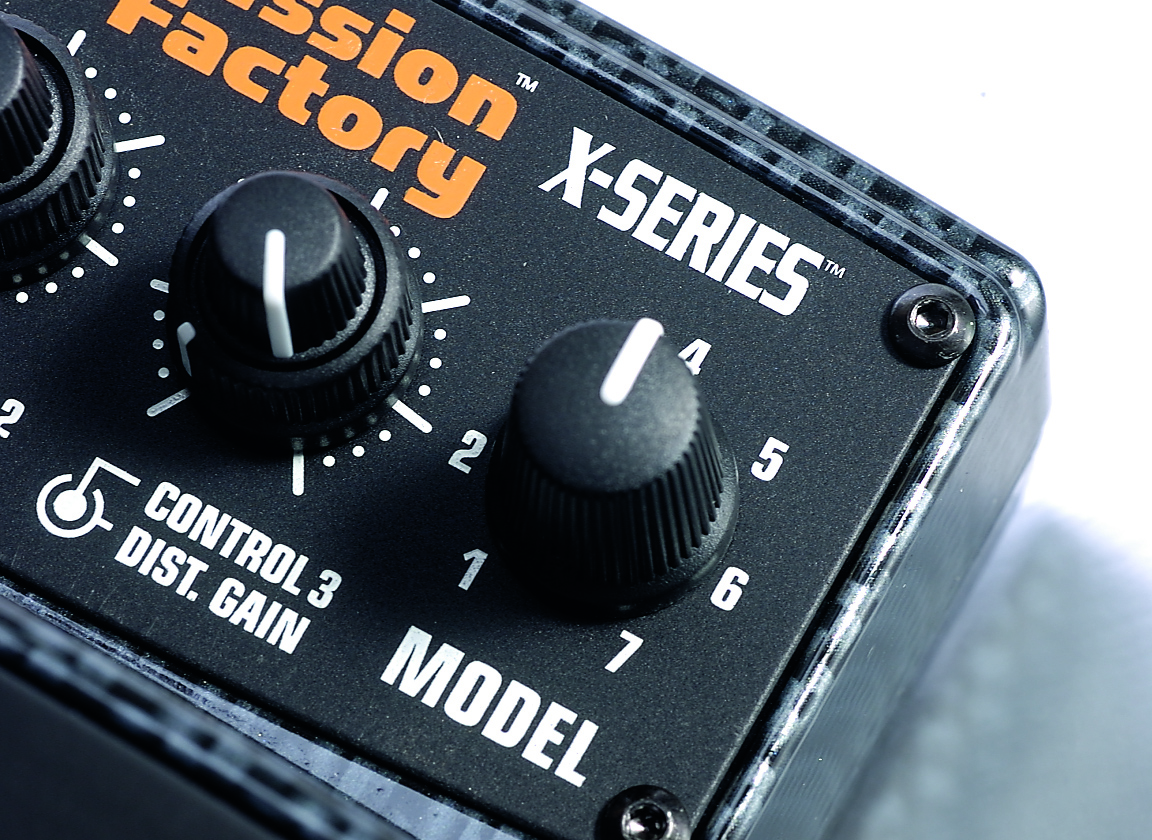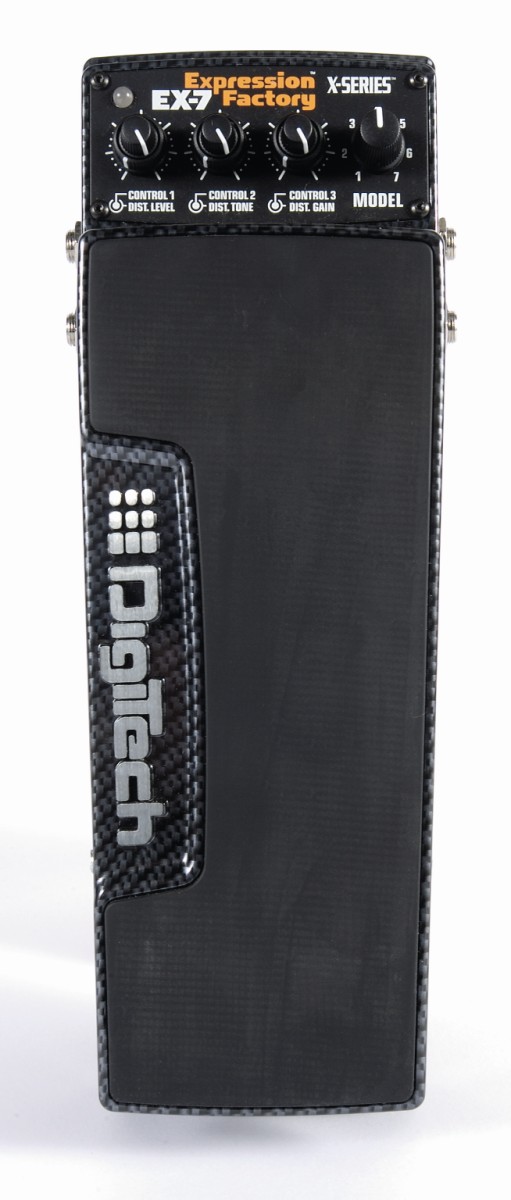MusicRadar Verdict
On the whole, this is a great little pedal. Many people find large multi-FX units overwhelming, so the EX-7 is a great way of narrowing down the choice and providing focus.
Pros
- +
Nails some great classic sounds.
Cons
- -
The dual footswitch and tip/ring controls can be fiddly.
MusicRadar's got your back



The philosophy at DigiTech seems to be 'if you've got it, flaunt it', and why not? The latest range of modelling multi-effects units is superb, and the technology involved lends itself perfectly to a 'modular' approach, allowing for any number of reinterpretations. One such approach is demonstrated with the Artist pedals, based around the classic sounds of Jimi Hendrix, Eric Clapton, Brian May, Dan Donegan and Scott Ian. With these pedals you just get a selection of amp and effect models associated with each artist, avoiding the complexity of the full-size modelling units.
The EX-7 is designed along similar lines, but the effects are chosen by type rather than associated artist. It features a selection of modelled 'expression' effects along with a selection of distortion and cabinet models. The obvious need for an expression pedal means that the unit is bound to be bigger than the majority of DigiTech's compact stompboxes, but it's still quite a streamlined design and similar to the Hendrix Experience pedal. Like the Hendrix and Clapton pedals, the EX-7 can be connected to either a mixer (or any direct recording tool) or a standard guitar amp, so there are two mono outputs to allow for this. Along with the input, there's also a jack socket for connecting an optional footswitch for more 'on the fly' flexibility.
Of the four controls, three are dual tip/ring knobs, which can be slightly fiddly but help keep the control panel down to a minimum size. The three ring controls adjust the gain, level and tone of the switchable distortion models, while the tip controls adjust various parameters of the expression models. The fourth control is used purely for selecting the preset sounds. There are two footswitches; one at the pedal's toe end and the other at the heel. In normal use, the toe end is used for engaging the effect model only, while the heel switch engages both effect model and distortion model simultaneously.
Sounds
Not all of the effects modelled in the EX-7 are usually associated with expression pedals, but don't worry about that. The beauty of digital modelling is that we're no longer constrained by the limits of hardware. A footswitch or continuous controller pedal can be used to adjust any parameter, far beyond the limits of the 'real' version. So with that in mind...
The first two models take us way back into the history of the expression pedal. While the Vox Clyde McCoy wah was originally aimed at trumpet players (and named after one) it was designed by a guitarist and found most success in the guitar community. Launched during the initial flush of Vox's wah success, the rival Dunlop Cry Baby did the same job, but with a slightly fatter tone. You can adjust the frequency range on the EX-7 and bandwidth of the wah sweep for both models, as well as output level.
Next up are two of DigiTech's own pedals, starting with the hard-to-find XP300 Space Station. Just like the original, the EX-7 model is designed to give you other-worldly chorus effects, pitch shifts and a synth-like swell effect. The pitch shifter has seven settings, ranging from an octave above to an octave below, while the other two controls cover the swell attack time and the balance between chorus and pitch shifting. Then there's the even more legendary Whammy pedal, which needs no introduction. The original Whammy had far more settings than would fit comfortably on the EX-7, so there are just a selection of sounds here... one harmony setting, detune and five whammy settings. You can also control the wet/dry mix (unlike the original!) and the overall tone.
The lush effect of a rotating speaker has long been popular among guitarists and the next two models represent two approaches to this sound. For purists only the original Leslie 147 model will do, and the EX-7's digital model makes good use of the expression pedal format, allowing you to adjust the drive, volume and minimum rotary speed. The pedal itself sweeps between (preset) maximum and minimum speeds. For guitarists who didn't want to lug rotary speakers around with them, the Unicord Univibe was the perfect solution and soon became a legendary effect, thanks to the efforts of Jimi Hendrix and Robin Trower. The DigiTech model has the standard intensity and volume controls and choice of chorus or vibrato sounds, while the footpedal controls the modulation speed.
The last model recreates the jet-engine rush of the A/DA Flanger, but with much less noise than the original. The expression pedal on the EX-7 controls the sweep of the flanger's filter, while the other three controls cover the feedback, LFO speed and delay range. So how does the EX-7 perform? We initially found the heel/toe footswitch arrangement a little awkward to use. This is probably more to do with habit than any shortcomings in the pedal design; when you use a Cry Baby (or similar) you tend not to notice how much pressure you're putting on your heel, but that can be crucial when there's a footswitch under it. With a bit of practice, though, the dual switch format becomes intuitive. The sounds are all very impressive.
After reviewing the GNX3000, we had a good idea of what to expect, and the set of models on the EX-7 was disappointing only in its greatly restricted range. The pedal can optionally be used in stereo mode (either with a mixer or a pair of amps) and this is particularly effective on the lush-sounding Space Station and Univibe models. Some of the combinations of effects and distortion types weren't quite to our taste, but that's no problem; it's a fairly trivial matter to change the default distortion model for each effect. There's a well-chosen set of distortion sounds on offer, ranging from vintage classics such as the Big Muff and Tube Screamer to the Rat and DigiTech Metal Master.
Bottom line, the effect models cover a sensible range of modulation and expression effects, and although you can't fine-tune, or store, the sounds as much as on a full-size multi-effects unit, there's a surprising amount of flexibility.
MusicRadar is the number 1 website for music makers of all kinds, be they guitarists, drummers, keyboard players, djs or producers...
GEAR: We help musicians find the best gear with top-ranking gear round-ups and high- quality, authoritative reviews by a wide team of highly experienced experts.
TIPS: We also provide tuition, from bite-sized tips to advanced work-outs and guidance from recognised musicians and stars.
STARS: We talk to musicians and stars about their creative processes, and the nuts and bolts of their gear and technique. We give fans an insight into the actual craft of music making that no other music website can.
“For some reason, the post office shipped your guitar to Jim Root of Slipknot”: Sweetwater mailed a metal fan's Jackson guitar to a metal legend
"No one phoned me. They never contacted me and I thought, 'Well, I'm not going to bother contacting them either'": Ex-Judas Priest drummer Les Binks has died aged 73
With the same mesh-head playability and powerful new Strata module as its bigger brothers, Alesis Strata Club brings a new compact form to its best-selling range










